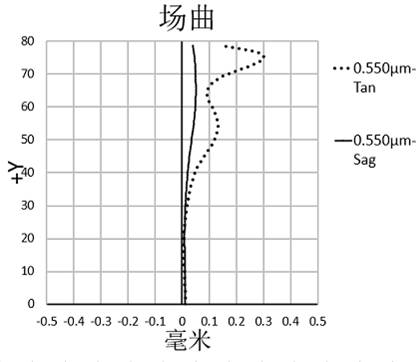Optical lens
An optical lens and lens technology, applied in the field of optical lenses, can solve problems such as difficult to meet the requirements of consumers, and achieve the effect of compact structure, wide range of shooting scenes, and high pixel balance.
- Summary
- Abstract
- Description
- Claims
- Application Information
AI Technical Summary
Problems solved by technology
Method used
Image
Examples
no. 1 example
[0088] For the structural schematic diagram of the optical lens 100 provided by the first embodiment of the present invention, please refer to figure 1 , the optical lens 100 along the near optical axis direction from the object side to the image side is: the first lens L1, the second lens L2, the stop ST, the third lens L3, the fourth lens L4, the fifth lens L5 and the sixth lens Lens L6.
[0089] The first lens L1 is a plastic aspheric lens with negative refractive power, the object side S1 of the first lens is concave at the near optical axis, and the image side S2 of the first lens is concave at the near optical axis;
[0090] The second lens L2 is a plastic aspheric lens with positive refractive power, the object side S3 of the second lens is convex at the near optical axis, and the image side S4 of the second lens is concave at the near optical axis;
[0091] The third lens L3 is a plastic aspheric lens with positive refractive power, the object side S5 of the third len...
no. 2 example
[0105] For the structural schematic diagram of the optical lens 200 provided in this embodiment, please refer to Figure 6 , the structure of the optical lens 200 in this embodiment is quite different from that of the optical lens 100 in the first embodiment, wherein the second lens L2 and the fifth lens L5 are thicker, and the second lens L2, the fifth lens L5 and the fifth lens The six-lens L6 unevenness is more obvious. The optical lens 200 is sequentially arranged from the object side to the image side along the near optical axis direction: the first lens L1, the second lens L2, the diaphragm ST, the third lens L3, the fourth lens L4, the fifth lens L5 and the sixth lens L6.
[0106] The first lens L1 is a plastic aspheric lens with negative refractive power, the object side S1 of the first lens is concave at the near optical axis, and the image side S2 of the first lens is concave at the near optical axis;
[0107] The second lens L2 is a plastic aspheric lens with posi...
no. 3 example
[0122] For the structural schematic diagram of the optical lens 300 provided in this embodiment, please refer to Figure 11 , the main difference between the structure of the optical lens 300 in the present embodiment and the structure of the optical lens 100 in the first embodiment is that: the radius of curvature of the first lens object side and the image side are different, and the second lens L2, the fifth lens The concavity and convexity of L5 and the sixth lens L6 are more obvious. The optical lens 300 along the near optical axis direction from the object side to the image side includes: first lens L1, second lens L2, diaphragm, third lens L3, fourth lens L4, fifth lens L5 and sixth lens L6 .
[0123] The first lens L1 is a plastic aspheric lens with negative refractive power, the object side S1 of the first lens is concave at the near optical axis, and the image side S2 of the first lens is concave at the near optical axis;
[0124] The second lens L2 is a plastic as...
PUM
 Login to View More
Login to View More Abstract
Description
Claims
Application Information
 Login to View More
Login to View More - R&D
- Intellectual Property
- Life Sciences
- Materials
- Tech Scout
- Unparalleled Data Quality
- Higher Quality Content
- 60% Fewer Hallucinations
Browse by: Latest US Patents, China's latest patents, Technical Efficacy Thesaurus, Application Domain, Technology Topic, Popular Technical Reports.
© 2025 PatSnap. All rights reserved.Legal|Privacy policy|Modern Slavery Act Transparency Statement|Sitemap|About US| Contact US: help@patsnap.com



